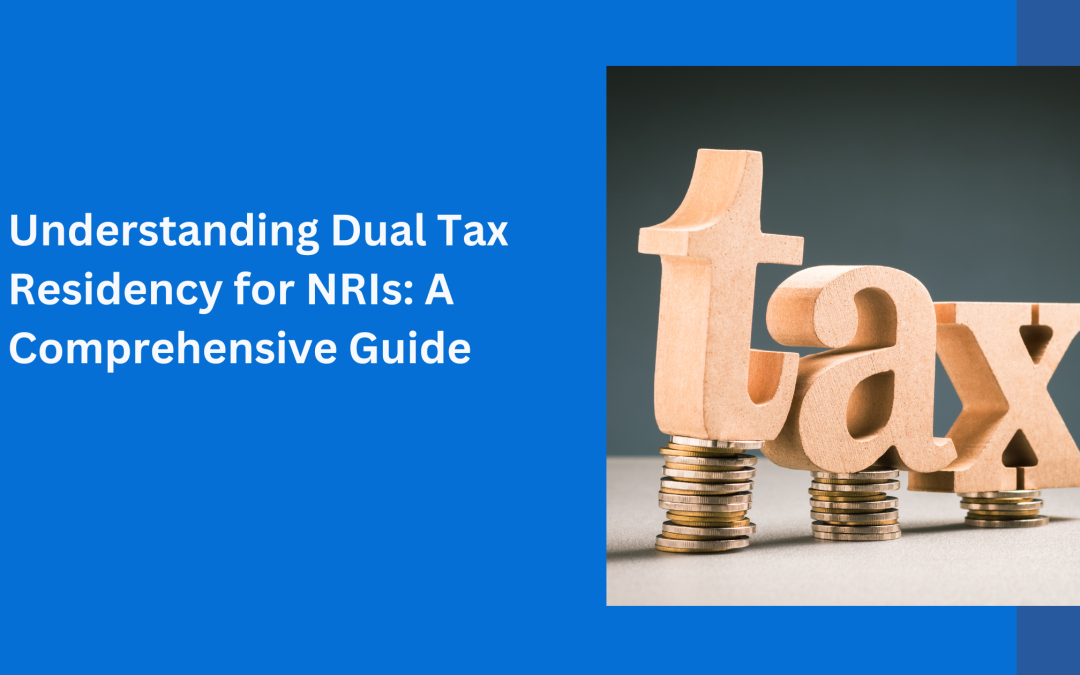Navigating tax obligations can be complicated for Non-Resident Indians (NRIs), especially when dealing with Dual Tax Residency for NRIs.This situation arises when an NRI is considered both a resident and a non-resident for tax purposes within the same year. It can often occur during the transition period of moving in or out of the United States, resulting in the need to file two different tax returns—Form 1040 for the resident period and Form 1040NR for the non-resident period. To manage such complexities, understanding the Tax Residency Certificate and DTAA benefits can provide valuable insights and help simplify the filing process. This blog explores what Dual Tax Residency for NRIs means, its implications for NRIs, and how to ensure compliance with U.S. tax obligations.
What is Dual Tax Residency?
A dual-status tax year occurs when an individual transitions from resident to non-resident status within the same calendar year, or vice versa. This is particularly common when someone either enters or exits the U.S. during the year, thereby acquiring both resident and non-resident status. Understanding the inheritance laws and tax implications for NRIs in India is essential, as it can impact how income is taxed and what deductions apply during such transitions.
Substantial Presence Test Requirements
To qualify as a dual-status taxpayer, NRIs need to meet the Substantial Presence Test. This test considers two main conditions:
- 31 days in the current year
- 183 days over three years, calculated as:
- All days in the current year
- One-third of days in the first preceding year
- One-sixth of days in the second preceding year
If you meet these conditions, you are considered a U.S. resident for tax purposes.
Green Card Holders vs. Non-Green Card Holders
Green Card holders are automatically considered lawful permanent residents for tax purposes. Their residency starts from the day they receive their Green Card and continues until they formally renounce it. For non-Green Card holders, residency is typically determined through the Substantial Presence Test.
Tax Obligations and Filing Requirements for Dual-Status NRIs
- Resident Period Taxation: During the resident period, NRIs must pay taxes on worldwide income, just like U.S. citizens. However, certain deductions and credits may not be available, such as the standard deduction.
- Non-Resident Period Taxation: For the non-resident period, the IRS only taxes U.S.-sourced income. There are two types of income taxed during this period:
- Effectively connected income: Taxed at regular rates.
- Fixed or determinable income: Taxed at a flat 30% rate.
Required Forms and Attachments
NRIs must file Form 1040 if they were a resident at the end of the year, or Form 1040NR if they were a non-resident. They will also need to attach statements detailing how their income is allocated between the resident and non-resident periods.
Common Mistakes to Avoid When Filing Dual-Status Tax Returns
- Using standard deductions: NRIs filing dual-status returns must itemize deductions.
- Filing jointly as two non-residents: This can lead to errors and higher taxes.
- Excluding worldwide income: NRIs should report all income earned during their resident period.
- Incorrect tax treaty claims: Ensure eligibility for benefits under the U.S.-India tax treaty.
Tax Treaty Benefits and Elections
The U.S. has tax treaties with many countries, including India, that can help minimize double taxation. NRIs may be eligible for:
- Reduced tax rates on certain income types.
- Tax exemptions on specific income categories.
- Credit provisions for foreign taxes paid.
By claiming these benefits, NRIs can reduce their tax burden.
State-Level Tax Considerations
While federal taxes are significant, state-level taxation can complicate dual tax residency further. Not all states follow the U.S.-India tax treaty provisions, and some may continue to tax you as a resident even if you qualify for non-resident status at the federal level. It is crucial to be aware of states that do not allow foreign tax credits, as these states may result in higher state tax obligations on income already taxed abroad.
Timing Strategies for Status Changes
Careful planning around the timing of your residency change can help you optimize tax outcomes. Keep detailed records of:
- Travel days to prove physical presence.
- Financial activity to demonstrate income sources.
- Official documents like drivers’ licenses, voter registration, etc.
Working with tax professionals can help ensure compliance and optimize your tax position.
Conclusion
Understanding Dual Tax Residency for NRIs is essential for managing your tax obligations effectively. NRIs should be mindful of how their residency status affects their tax filings and ensure compliance to avoid penalties. By staying informed about tax treaties, U.S. tax rules, and state tax laws, NRIs can maximize tax savings and avoid common pitfalls.
For expert guidance on dual residency and tax compliance, contact Brivan Consultants today. Our team of tax professionals can help you navigate the complexities of U.S. taxation for NRIs and ensure your tax filings are accurate and timely.
Frequently Asked Questions (FAQs)
Q1. What is dual tax residency, and how does it impact NRIs?
Ans: Dual tax residency means being both a resident and non-resident in the same year. This affects how you file taxes, requiring two separate filings for different periods.
Q2. How does the Substantial Presence Test determine residency?
Ans: You qualify as a U.S. tax resident if you have 31+ days in the U.S. in the current year and 183 days over three years, calculated using a weighted formula.
Q3. Can dual-status taxpayers claim the standard deduction?
Ans: No. Dual-status taxpayers must itemize deductions and cannot take the standard deduction.
Q4. How are U.S. tax treaty benefits useful for NRIs?
Ans: Tax treaties between India and the U.S. help reduce double taxation, lower tax rates, and offer foreign tax credits.

